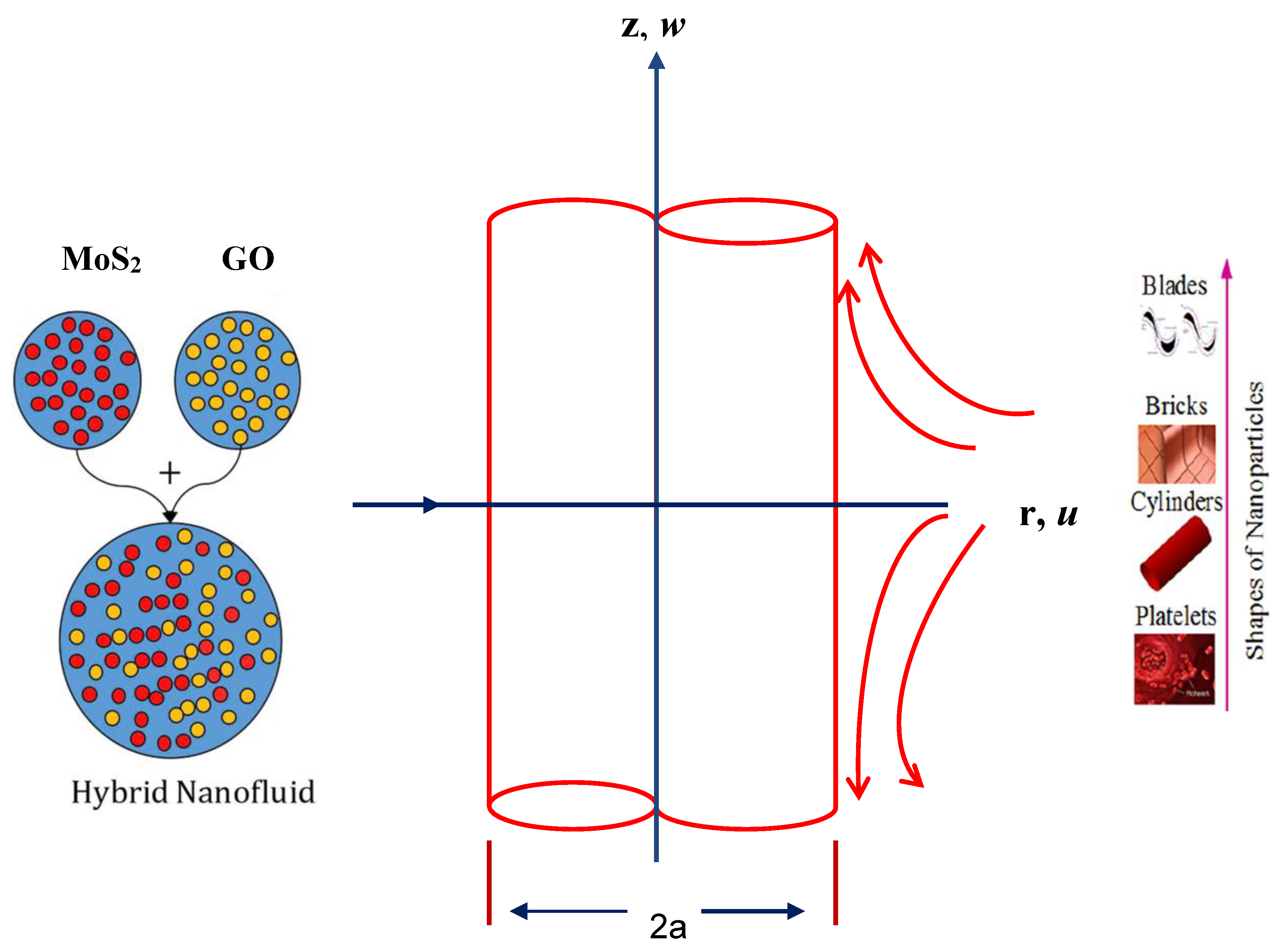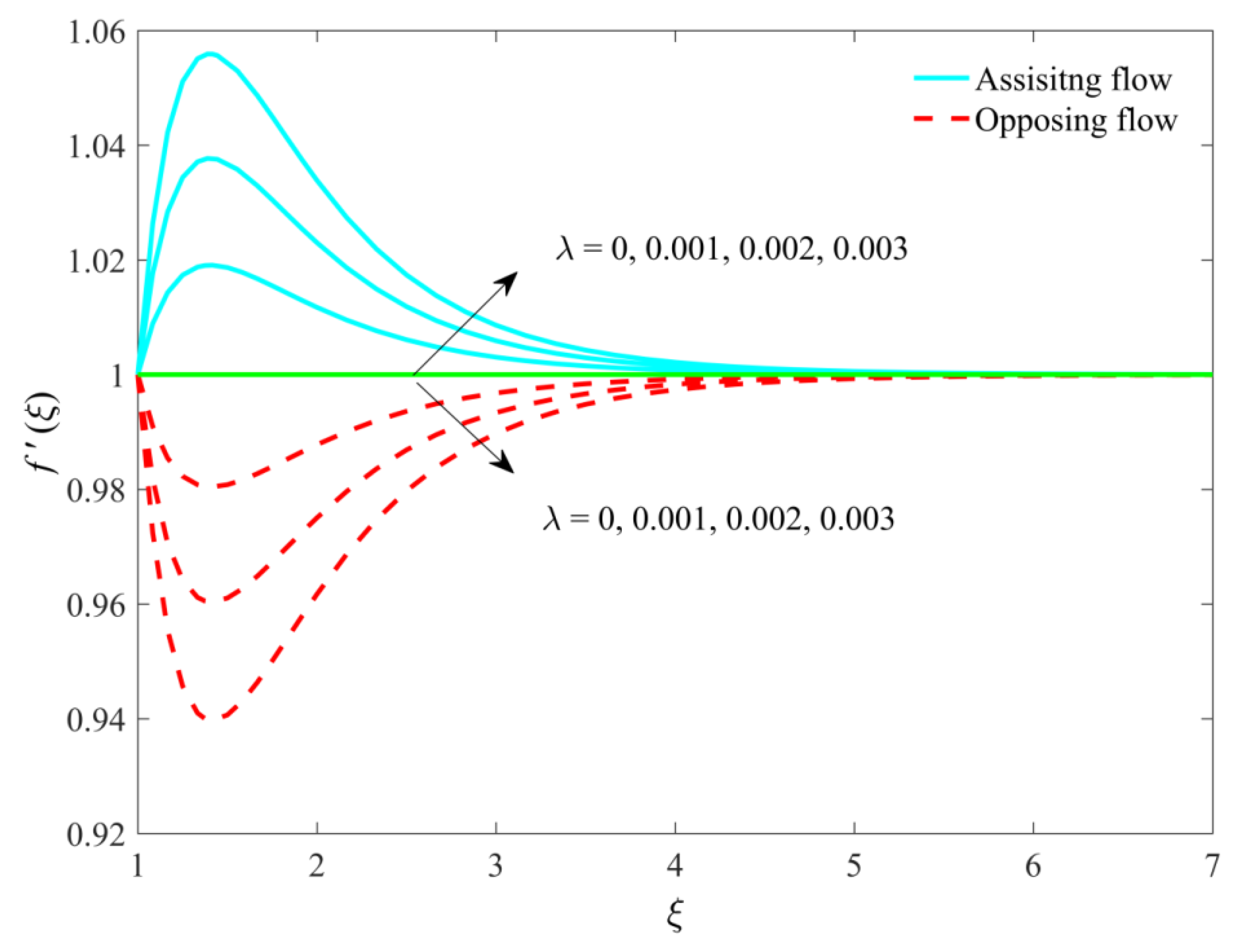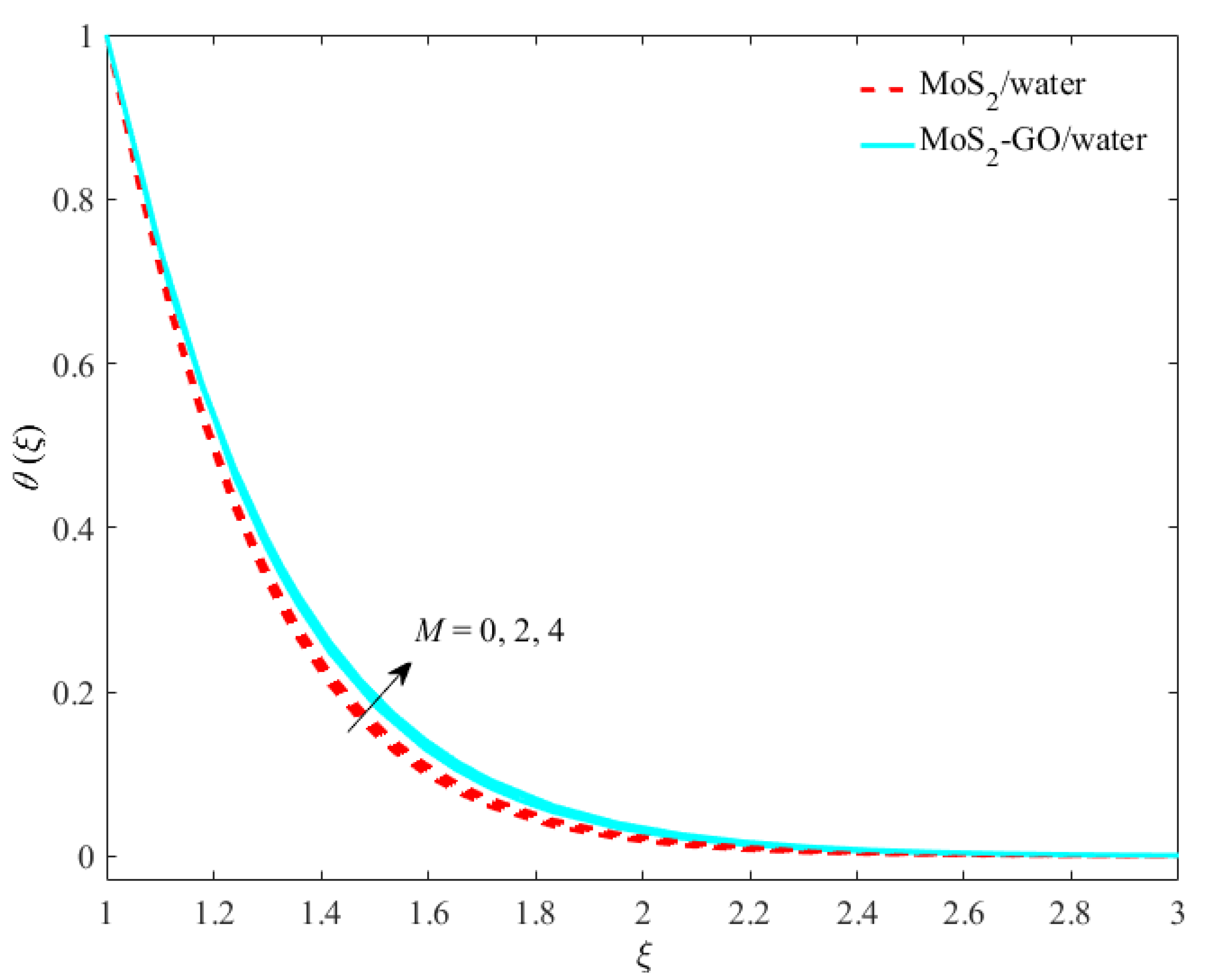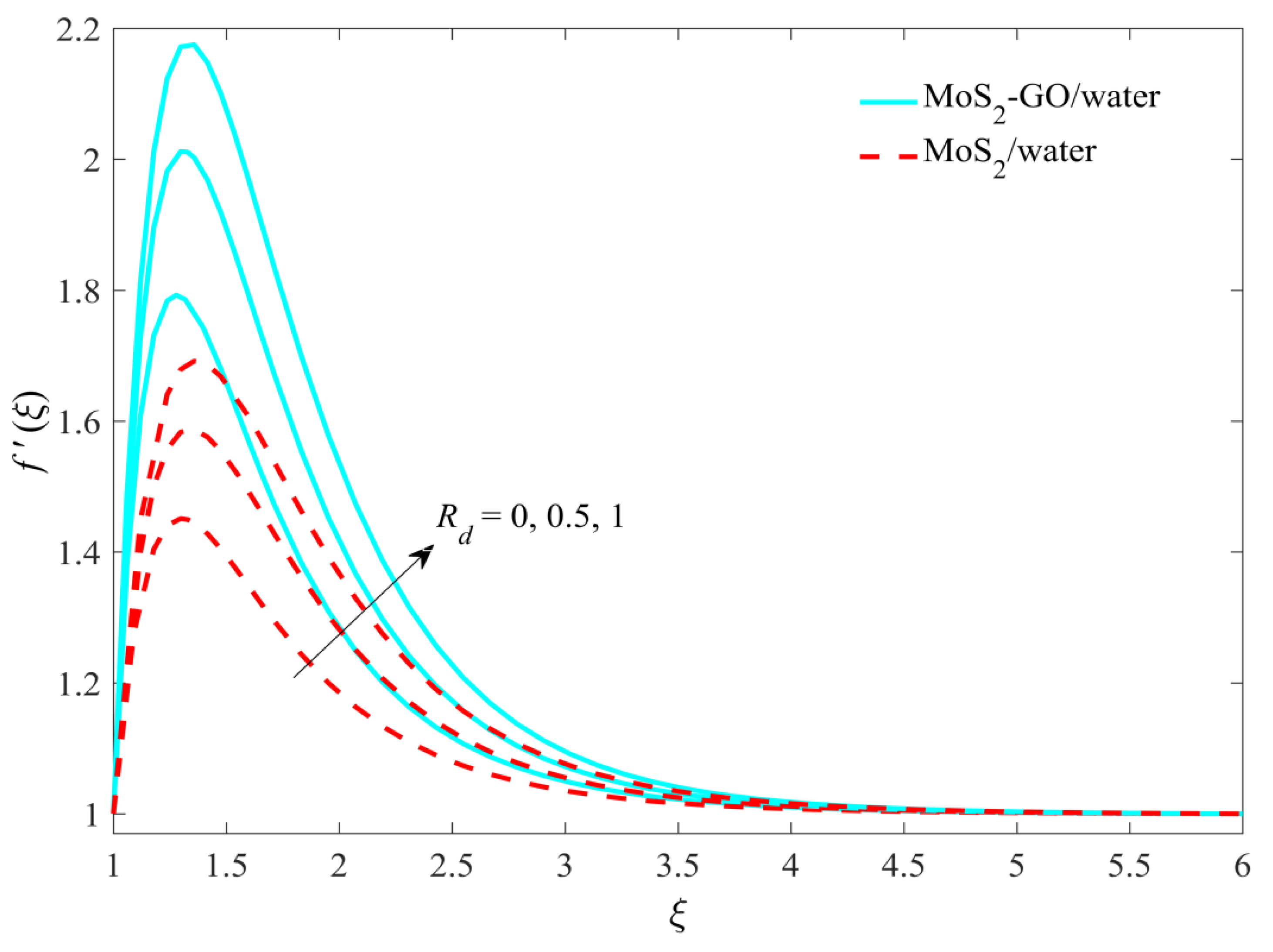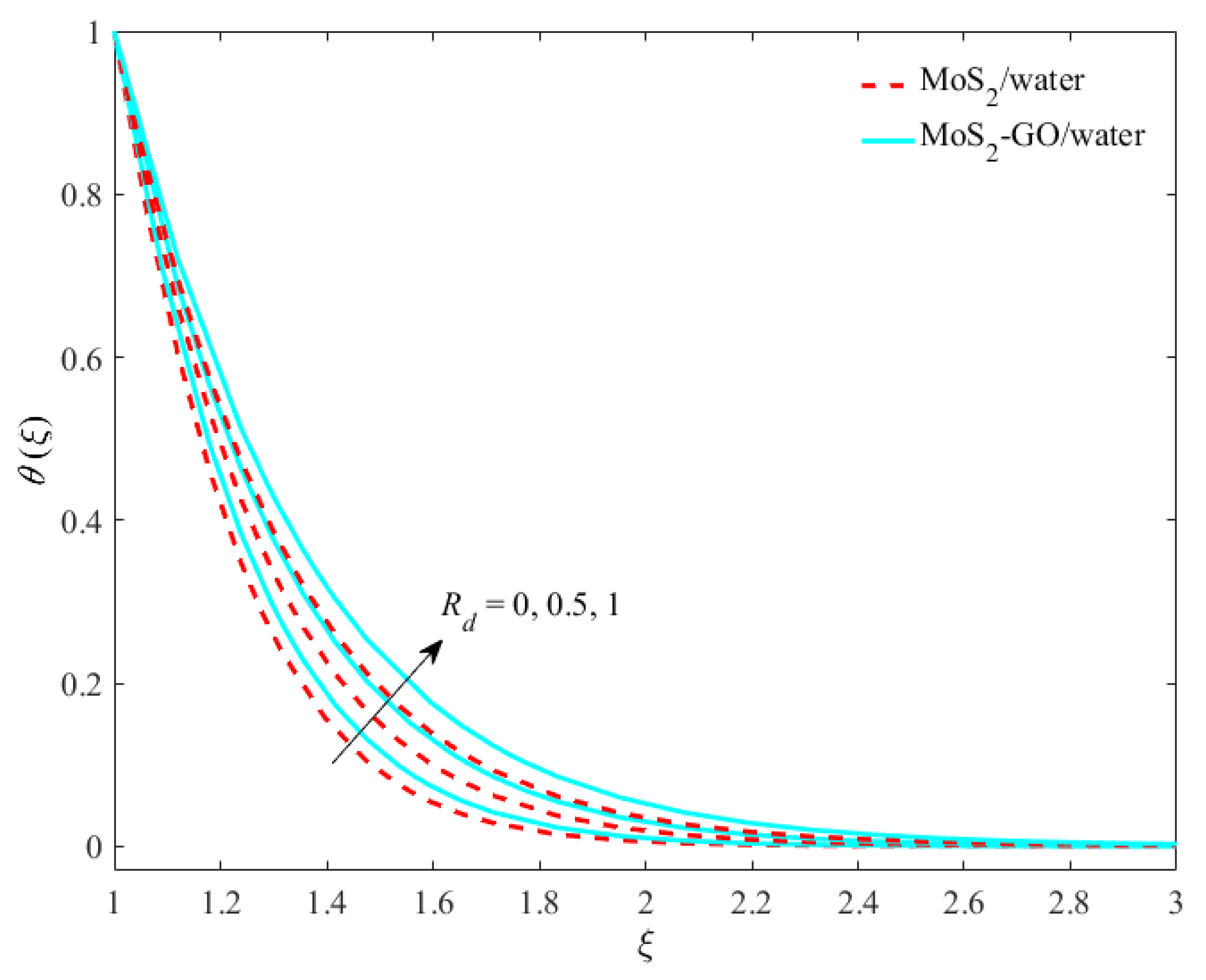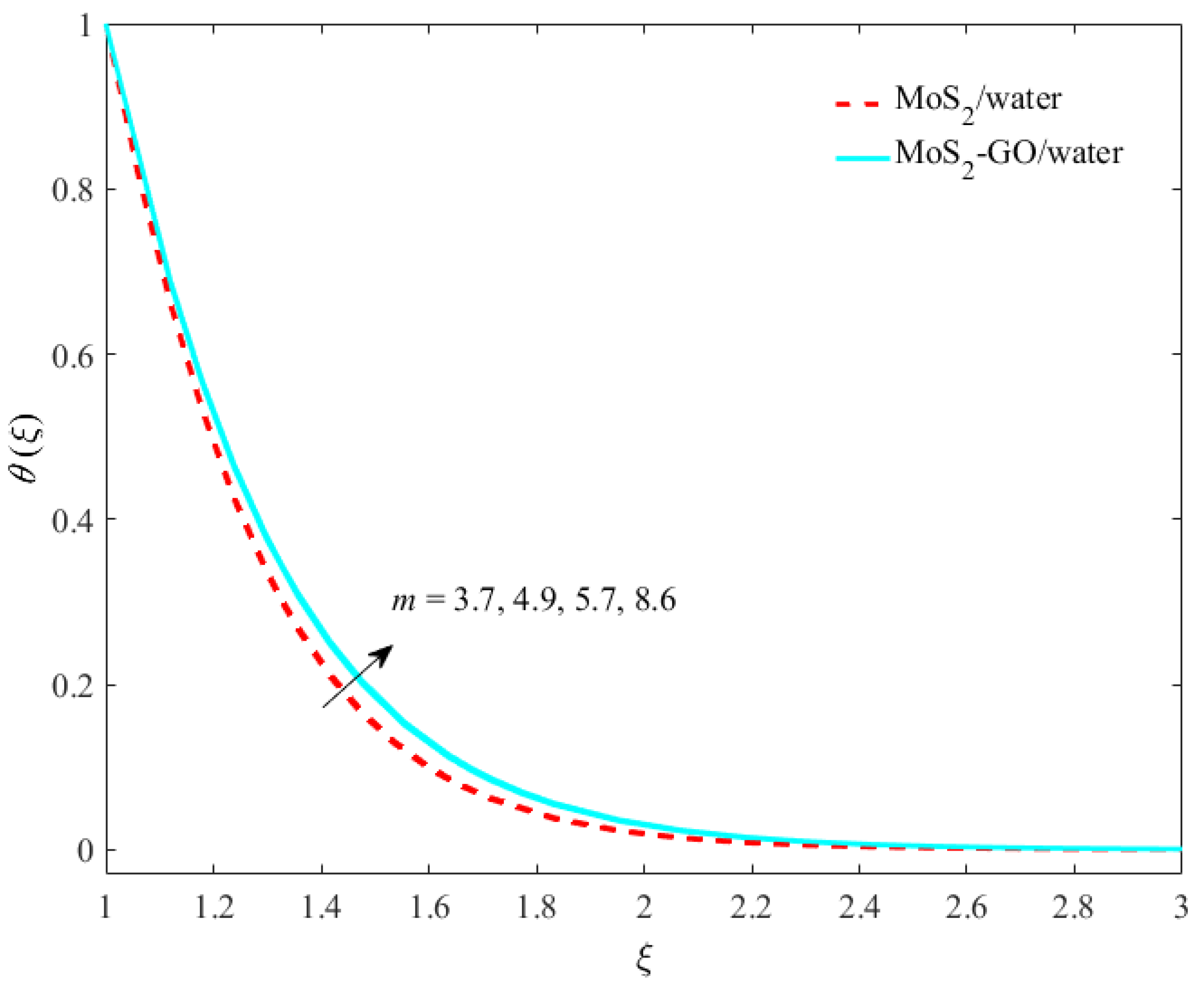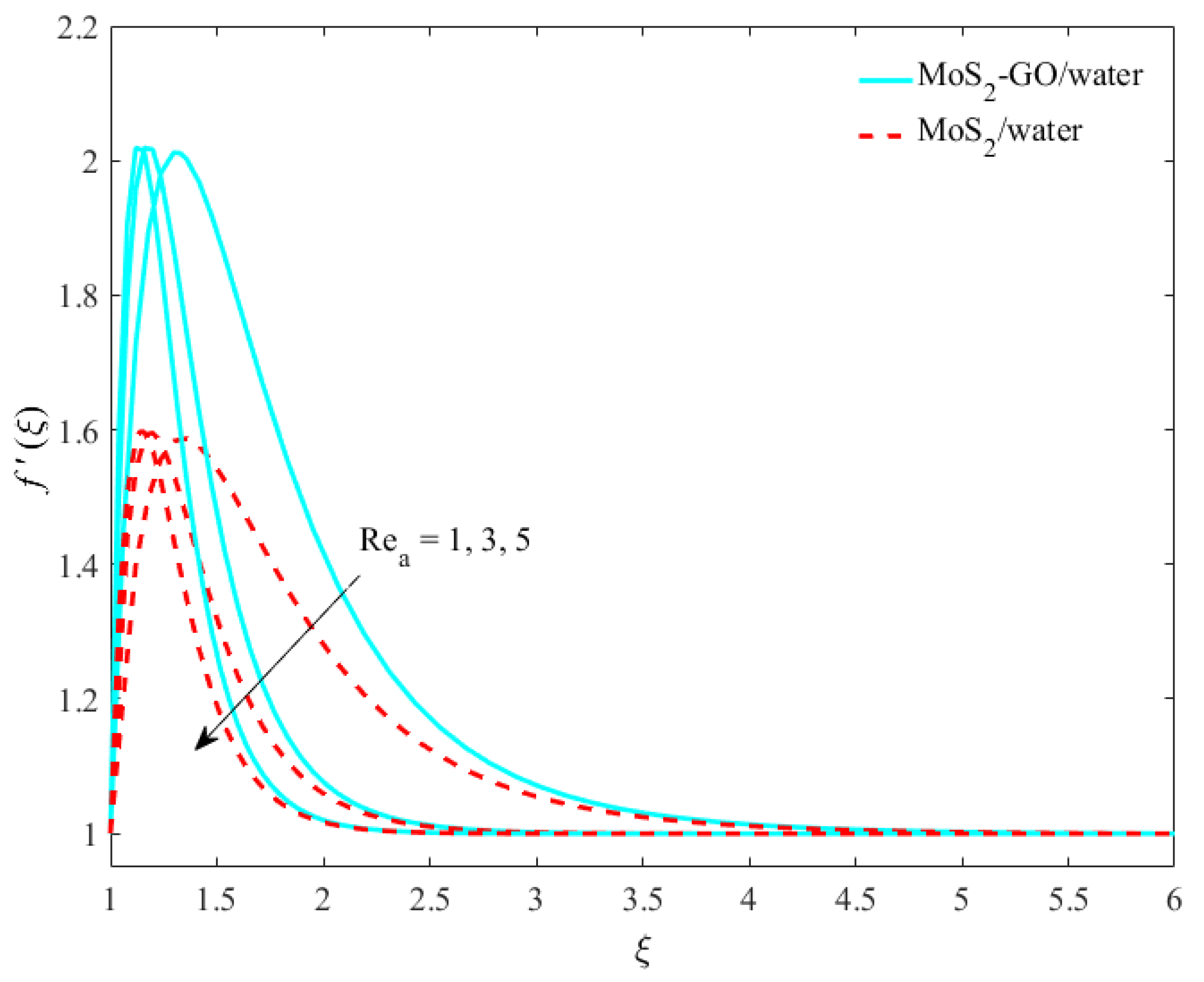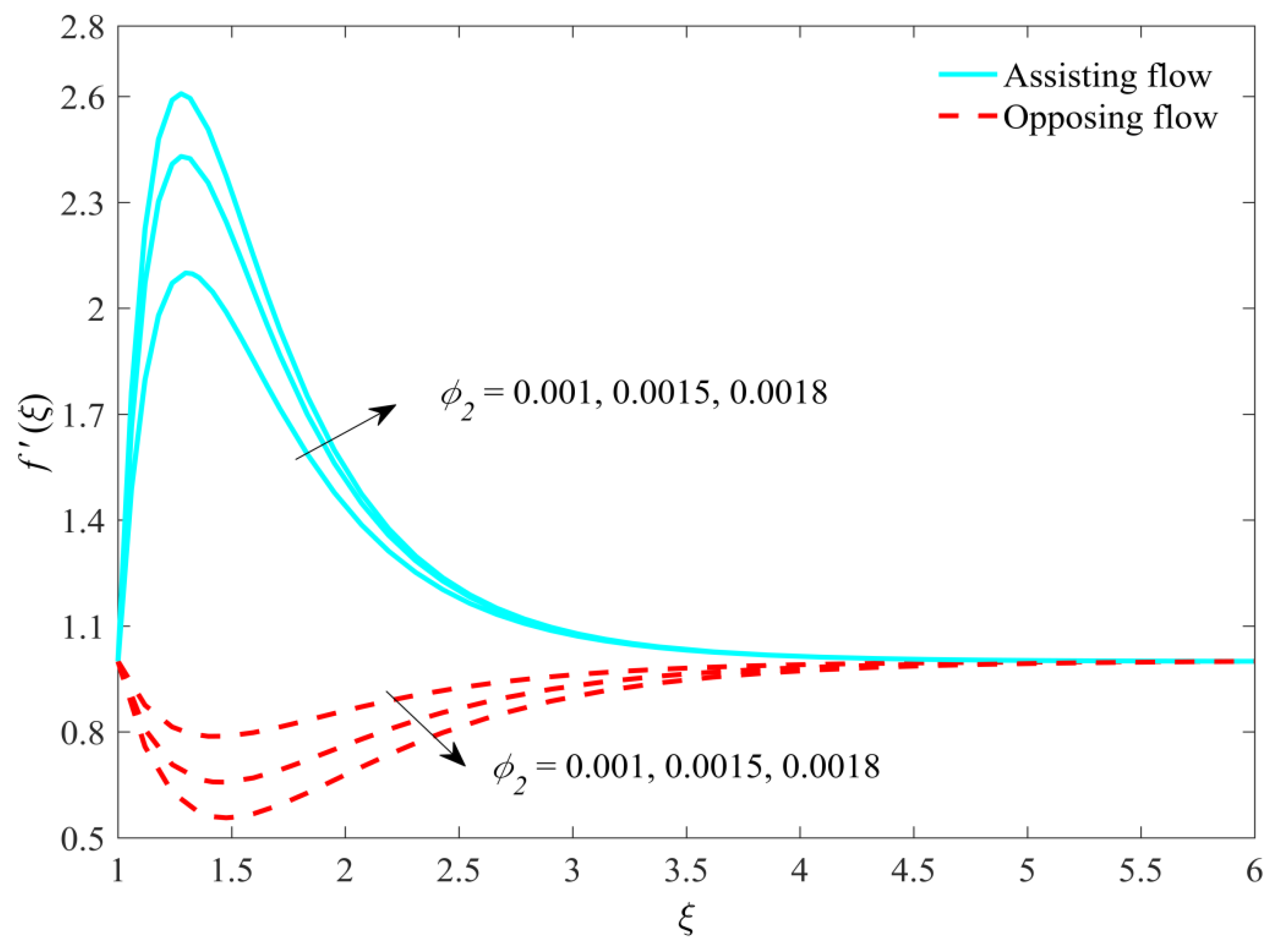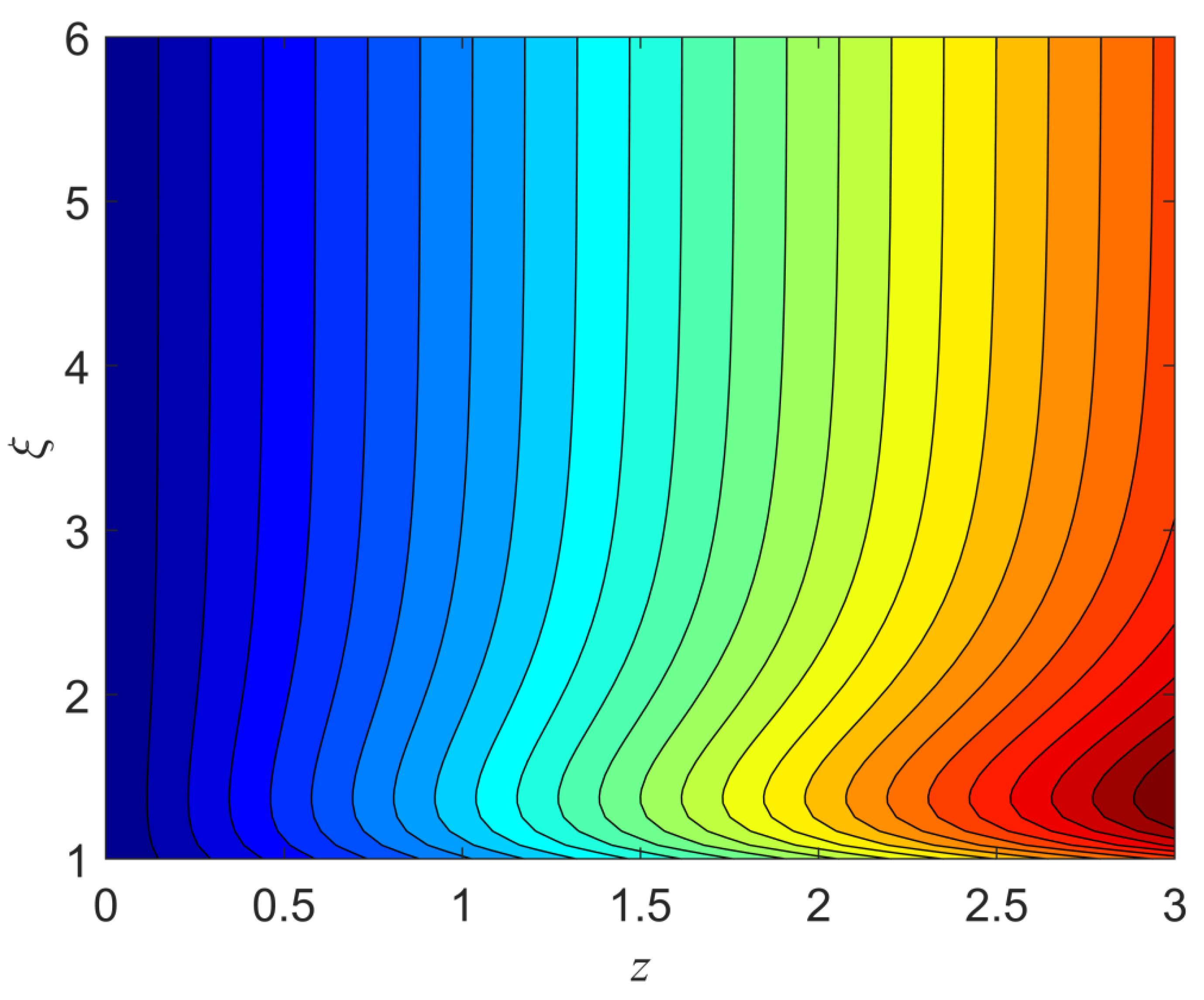The nonlinear ODEs (8) and (9), with restricted conditions (10), were numerically exercisedvia bvp4c, based on theLobatto IIIA formula.
Table 4 is prepared for validation of the current result
, with published outcomes of Fang et al. [
22] and Hamid et al. [
23] in the restrictive cases, who found an excellent agreement. The outcomes of diverse constraints in the existence of shape factors of nanoparticles on fluid velocity and temperature profile, along with friction factor and the Nusselt number for nanofluids, as well as hybrid nanofluid phases, have been examined through the graphs (
Figure 2,
Figure 3,
Figure 4,
Figure 5,
Figure 6,
Figure 7,
Figure 8,
Figure 9,
Figure 10,
Figure 11,
Figure 12,
Figure 13,
Figure 14 and
Figure 15) and tabulated in Tables (
Table 5 and
Table 6). Additionally, the assisting flow and opposing flow were discussed.
Figure 2 and
Figure 3 inspect the influence of mixed parameter
on the profiles of velocity and temperature, respectively. It is clearfrom
Figure 2 that the velocity of fluid is more pronounced for greater
in the case of assisting flow. Physically, the greater amount of
generated a larger buoyancy force, which gavethe highest moving energy, and such energy generates the confrontation through the flow. The contrary trend was analyzed for the velocity in the case of opposing flow.
Figure 3 reveals that the temperature and the corresponding boundary layer declined due to
in the assisting and opposing flows.
Figure 4 and
Figure 5 depict the impact of magnetic parameter on the velocity and temperature profiles.
Figure 4 indicates that the magnetic parameter resisted with the velocity of fluid in the hybrid nanofluid, as well as the nanofluid and, as an output, the velocity boundary-layer thickness declined. Physically, the existence of the magnetic field engendered the Lorentz forces, whichwere, in fact, the drag force. The flow and Lorentz force acted in acontrary way to each other, which caused the flow retardation.
Figure 5 explains that by amplifying the potency of magnetic parameter, the fluid temperature augmented. Physically, aresistive kind of force, such as the Lorentz force, countered with the fluid motion, thus heat was fabricated, and, consequently, the temperature and corresponding boundary-layer thickness was thicker. In addition, it is clear from these profiles that the fluid flow accelerated more for hybrid nanoparticles as compared to MoS
2/water nanoparticles.
Figure 6 and
Figure 7 highlight the impact of radiation parameter on the fluid velocity and temperature distribution. It is transparent from these portraits that the fluid motion and temperature distribution augmented due to the magnifying of the radiation parameter. Physically, the surface of the heat flux increaseddue to the radiation, and, consequently, ahighertemperature in the boundary-layer flow(BLF) region should be approximated. The achieved result was a confirmation of the legitimacy of the relation
. Additionally, the radiation was utilized to collapse the molecules of water into hydrogen. The influences of shape factors on the temperature distribution and velocity are portrayed in
Figure 8 and
Figure 9, respectively. The velocity and temperature of the HBNF is also shown, as well as a nanofluid augment with the shape factor. Physically, the sturdy hydrogen bonding of HBNF and NF caused a sharp augment in the thermal conductivity and thus the velocity and temperature profiles enhanced. In addition, the temperature was at a maximum for the blade shape and at a minimum in the case of the cylinder for hybrid nanofluid and for nanofluid.
Figure 10 and
Figure 11 demonstrate the inspiration of
on the temperature and velocity fields for hybrid nanofluid and nanofluid. It is expected from these profiles that the velocity and temperature decline with escalating values of
. The stimulus of the nanoparticle volume fraction
on the velocity and temperature profiles are portrayed in
Figure 12 and
Figure 13 for the assisting and opposing flows.
Figure 12 explains that the velocity augments with
for
and declines for
. The upsurge in the velocity is owing to the reality that the dynamic viscosity of hybrid nanofluid had an inverse relation with the volume fraction. Therefore, an augment in
guided to decline the viscosity of regular fluid and consequently accelerated the fluid flow. Whereas, the contrary impact was seen on the temperature (
Figure 13). The patterns of streamlines with and without hybrid nanofluid are portrayed in
Figure 14 and
Figure 15. Major deviation in the trajectories was seen among the particle motion.
Table 5 and
Table 6 wereprepared to see the influence of volume fraction
and magnetic parameter
on the skin factor and the rate of heat transport for hybrid nanofluid with different shape factors, respectively. In
Table 5, it is apparent that for
m = 3.7, 4.9, 5.7, and 8.6, enhancements of 9.082%, 9.126%, 9.154%, and 9.62%, respectively, are observed in the friction factor in case of hybrid nanofluid, while there were enhancements of 18.925%, 18.972%, 18.997%, and 19.111%, respectively, in the normal nanofluid. Alternatively, for
m = 3.7, 4.9, 5.7, and 8.6, the heat transportrate augmentedby 1.024%, 1.192%, 1.300%, and 1.682%, respectively, in case of hybrid nanofluid, whereas it augmented by 1.148%, 1.317%, 1.425%, and 1.805% in the case of normal nanofluidwith
. Physically, the thermal conductivity was enhanced due to
, which consequently boosted up the transfer rate of heat in both nanofluids. In addition, the skin factor and the heat transport rate weregreater in the case of blade shape and were lower in the cylinder shape. Whereas, the skin factor and the heat transport rate declined due to magnetic function for hybrid nanofluid, as well as for normal nanofluid, as shown in
Table 6.
Table 6 guarantees 2.539%, 2.551%, 2.547%, and 2.559% and 2.247%, 2.249%, 2.256%, and 2.267%reduction in the skin friction for normal and hybrid nanofluidsfor
m = 3.7, 4.9, 5.7, and 8.6, respectively. Whereas, the heat transfer shrankup to 0.159%, 0.160%, 0.161%, and 0.164% and 0.246%, 0.248%, 0.249%, and 0.254%, respectively, for normal and hybrid nanofluids.
